EN

Ensaio Carnaval Atonal © Nuno Miguel Coelho
This year, there's a new Carnival group parading through the streets of Porto. It's a band with musicians and non musicians, open to anyone who wants to take part and which uses experimental music and the visual arts as ‘vehicles for collaboration, creation and celebration’. The idea came from Luiza Leitão, who was inspired by the Carnival blocks of Rio de Janeiro, where she is from, to create Carnaval Atonal, one of the 17 projects supported by Criatório in 2024.
‘The proposal is to bring together a Carnival block and the experimental music and noise community that exists in Porto, which is quite strong,’ the artist tells us. ‘The atonal comes from there, without tone; we don't work with typical, traditional instruments; musically, we're trying to find a samba noise place,’ she emphasises, adding that this project “says a lot about her existence in this city”. ‘I was introduced to this universe of noise, of experimentation, of do-it-yourself philosophy, and Carnival is a platform without limitations,’ emphasises the Brazilian artist who has lived in Porto since 2017.
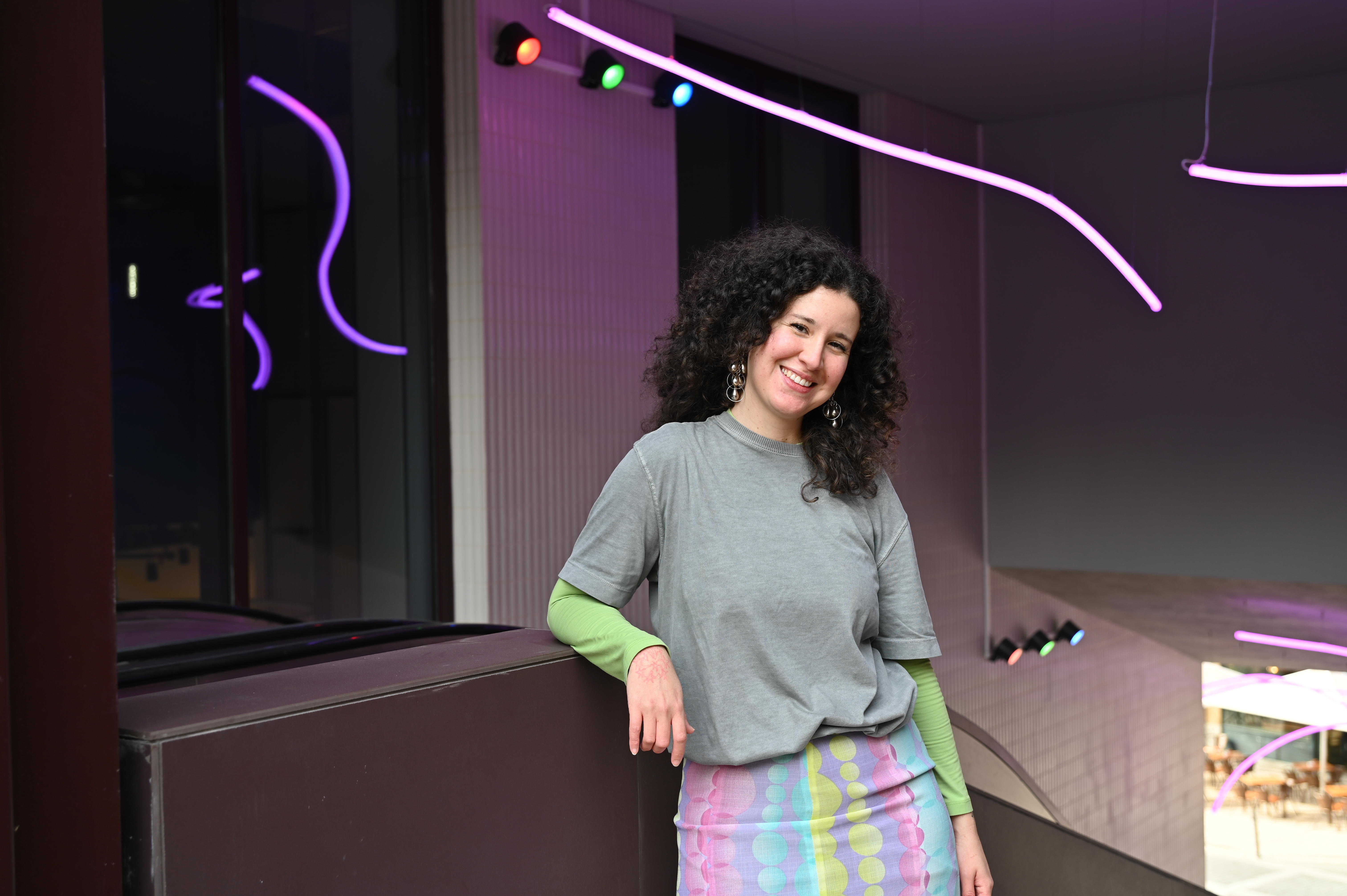
Luiza Leitão © Rui Meireles
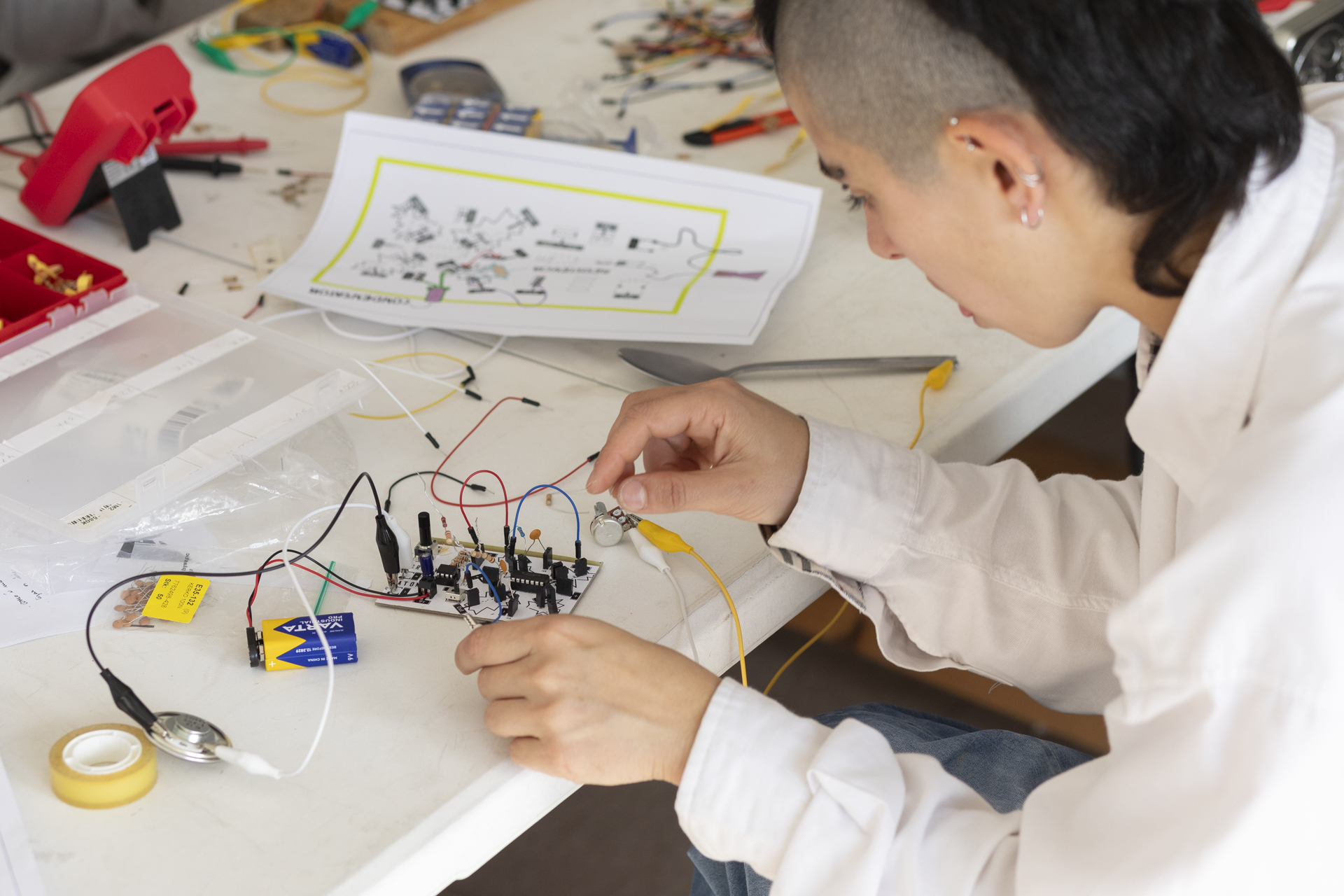
Oficina de gambiarras eletrónicas © Carlos Campos
To get the block rolling, free workshops were held at the end of last year to build unconventional instruments, namely electronic and acoustic gambiarras and ceramic instruments, under the guidance of visual artists who explore sound in their creations.
‘In Brazil, gambiarra is a spontaneous way of solving some everyday problem with the materials you have at hand, it's in the sense of improvisation,’ explains Luiza. The electronic gambiarras were built under the guidance of Pierre Pierre, a self-taught sound artist and one of the mentors of this project, who taught how to build electronic instruments without soldering, while artist Inês Tartaruga Água demonstrated how it is possible to achieve sonorities with wind instruments made from PVC pipes and balloons. ‘We made membranophones, which consist of tubes with membranes through which air passes, and which emit a sound almost like a bagpipe or a flute, it varies a bit,’ she says.
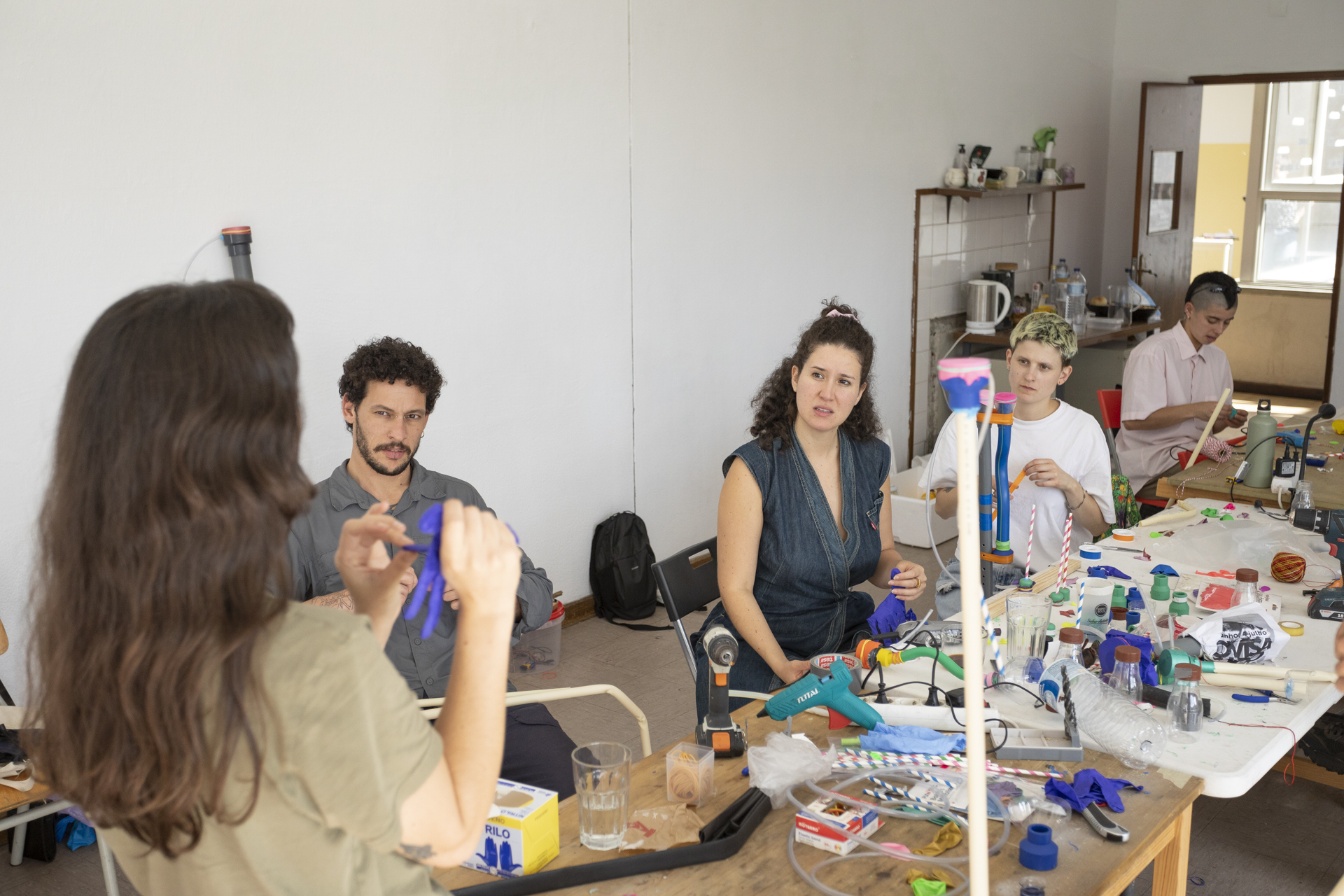
Oficina de gambiarras acústicas © Carlos Campos
There was also a workshop dedicated to creating ceramic instruments, organised by Rebeca Letras, where participants built whistles, megaphones and rattles. ‘Everything was done with the intuition of the collective. The instruments built can be played by anyone who wants to join in, there are lots of instruments,’ says Luiza, launching the challenge for interested people to join the Atonal Carnival.
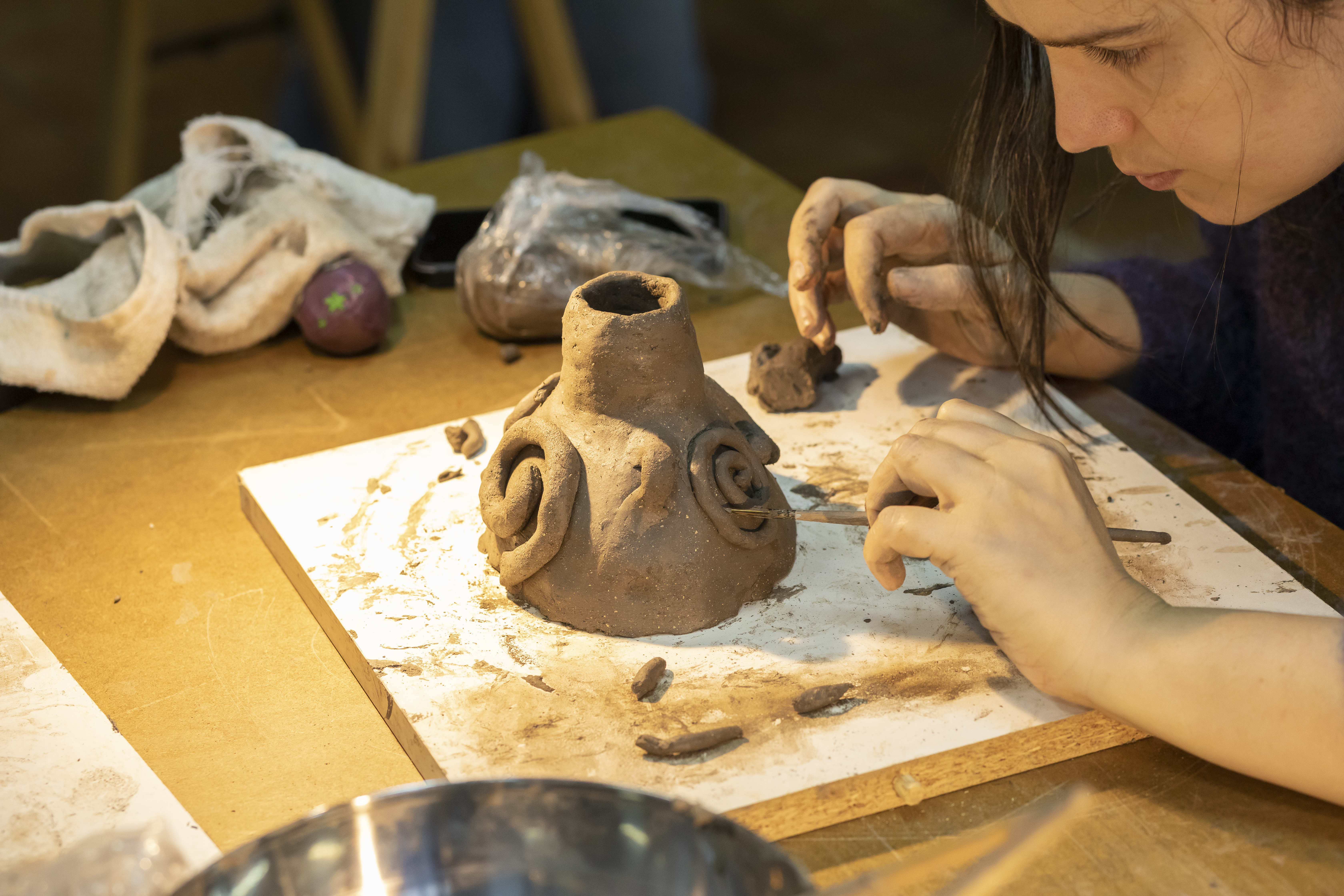
Oficina de instrumentos cerâmicos © Carlos Campos
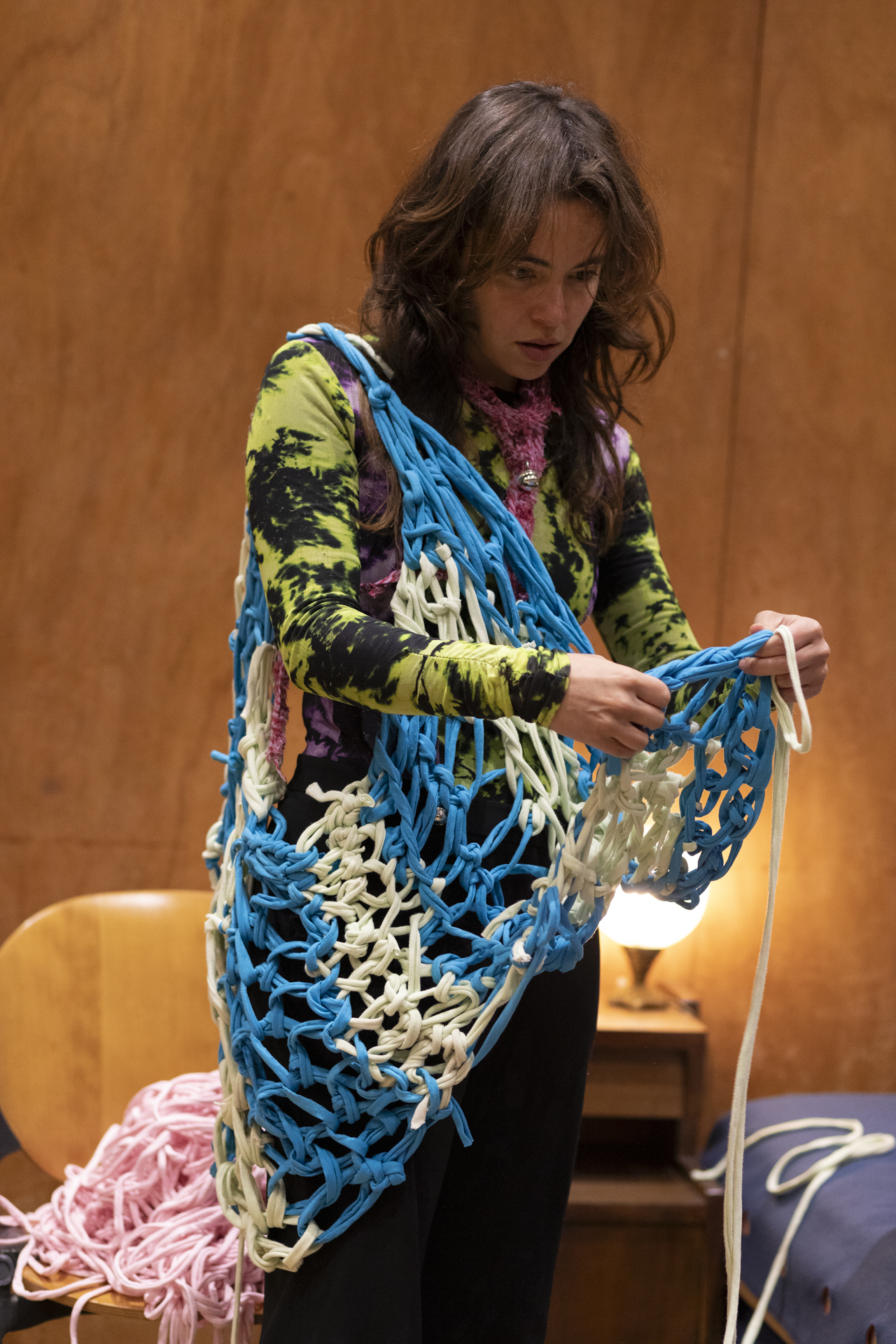
Oficina "Fantasia dos Sonhos" © Carlos Campos
The last workshop, ‘Fantasia dos Sonhos’ (Dream Fantasy), took place in December and was led by Nani, with the aim of creating costumes for the fashion show from discarded fabrics and disused clothes. ‘Nani is an artist who researches the yarn used to make traditional rugs; she creates wefts using knitting techniques, but only using her hands, without needles or machines; and all of this seemed to make sense to me because I wanted things to be very handmade and accessible so that anyone who learnt how to do it could easily replicate it at home,’ explains Luiza.
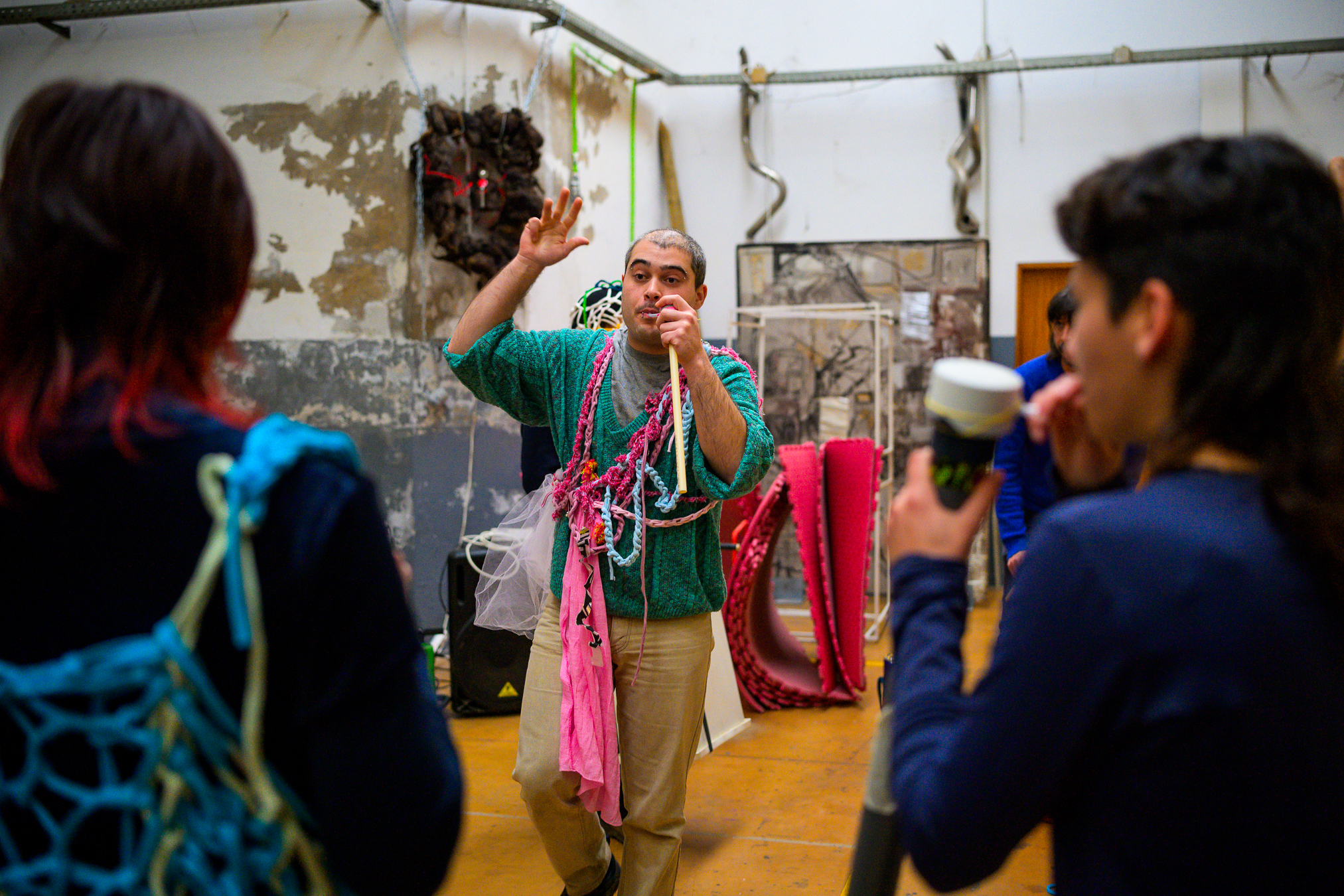
Francisco Aguiar durante o ensaio © Nuno Miguel Coelho
Rehearsals in the Tunnel: Orchestrating Chaos
NOn a rainy Sunday in February, Agenda Porto attended an Atonal Carnival rehearsal with the participation of musician Frankão. While they experimented with membranophones and percussion instruments made from rubbish bins and drums, they also fine-tuned their voices. Because despite the noise, there's also melody:
Eu tinha uma andorinha que me fugiu da gaiola/ Vai, andorinha preta/ De asa arrepiada,/ Vai, vai dormir teu sono andorinha, ô/ Que é de madrugada. (I had a swallow that escaped from its cage/ Go, black swallow/ With flapping wings,/ Go, sleep your sleep swallow, ô/ It's dawn. — The verses of the Brazilian song ‘Andorinha Preta’, written by Breno Ferreira Hehl and recorded in the 1930s, will be part of the Atonal Carnival parade. It was a choice made by Francisco Aguiar, who was challenged by Luiza Leitão to ‘Orchestrate Chaos’ (the name given to the rehearsals).
“‘It's the first time I'm doing something like this, I don't have the experience of batucada, but I have some ideas about composition and how things can work,’ he says, admitting that “managing a group of people and walking with them on the street is nerve-wracking”. However, the fact that it's a participatory and collaborative project reassures him: ‘People are waiting for someone to guide them, but everyone can take part in the creative process, contributing with ideas.’
This idea of participation underpins the whole project. That's why Luiza Leitão emphasises that ‘everyone is welcome to take part in the parade, to clown around and have fun’. The gathering is scheduled for 2pm at Túnel, 601 R. de Justino Teixeira, in Campanhã.
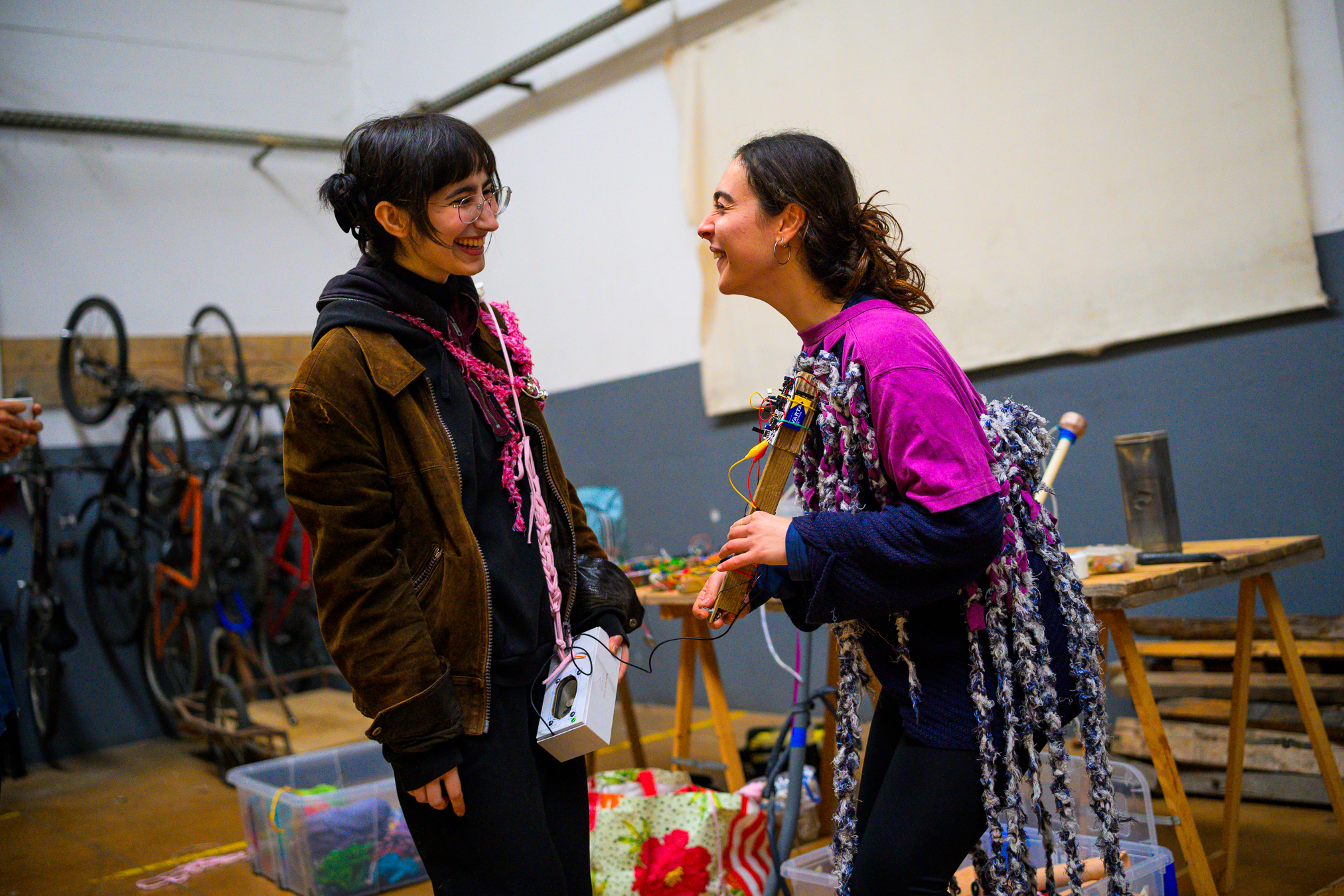
Ensaio de Carnaval Atonal © Nuno Miguel Coelho
Share
FB
X
WA
LINK
Relacionados


